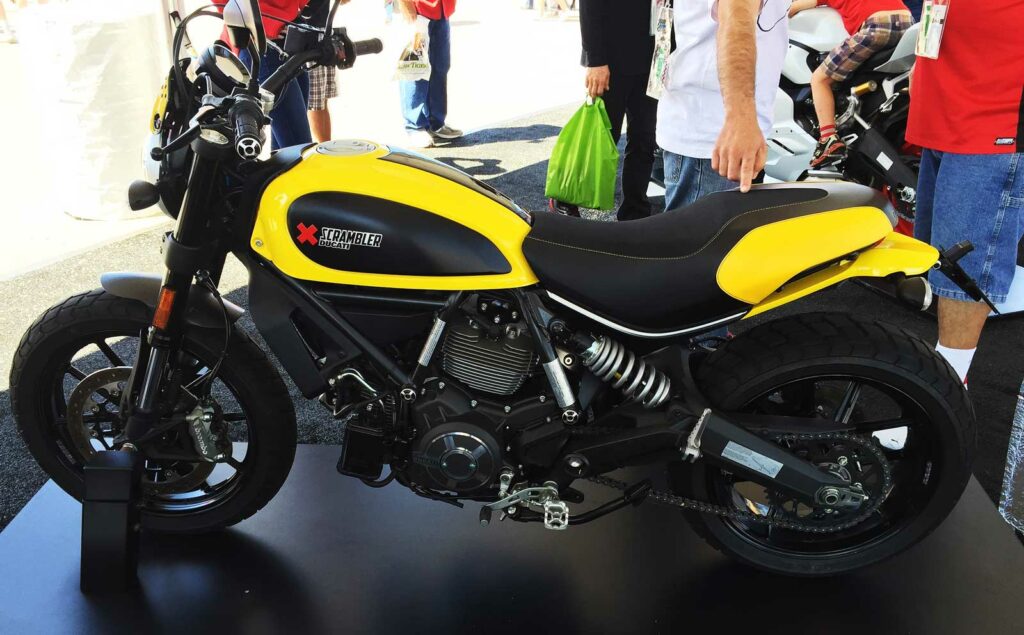Scrambler motorcycles stand out for their unique combination of functionality and aesthetics. Here, we’re digging into what makes them unique: their design traits, off-road prowess, and street performance.
But why do so many riders love them?
What role does their history play in their current popularity?
Here, we provide insights into the world of scrambler motorcycles, addressing both the basics and deeper aspects for enthusiasts and prospective buyers.
Defining Scrambler Motorcycles
Ready for a ride on the wild side? Scrambler motorcycles invoke an image of freedom and adventure, traits that might just resonate with your spirited side. Before we hit the trails, let’s break down what really sets these bikes apart.
What Defines a Scrambler Motorcycle
Scrambler motorcycles are distinguished by their simplistic yet functional design that is tailored for both on-road and off-road riding. Key characteristics include a high exhaust, long suspension travel, and a higher-than-average ground clearance, allowing them to tackle rough terrain with ease. Typically, the seat is designed to be comfortable for longer rides, and scramblers also feature all-terrain tires to conquer diverse landscapes.
Historically, scramblers originated where riders adapted standard motorcycles to handle the rigors of off-road racing and riding. Now, they combine practicality with a style that pays homage to their roots, offering a blend of nostalgia and modern performance. Dive into the historical roots of scrambler motorcycles for a richer understanding of their evolution.
How Scramblers Differ From Standard Motorcycles
Scramblers and standard motorcycles share a common ancestry, yet the paths they’ve blazed are quite distinct. Unlike standard motorcycles, scramblers boast specific features adapted for rough terrains, such as a robust frame and suspension designed to absorb shocks and ensure stability off the beaten path. Additionally, their engines typically provide ample low-end torque, pivotal for off-road prowess as noted in explanations of scrambler engine characteristics.
The style of a scrambler motorcycle is unmistakable: it strikes a balance between rugged functionality and a minimalist aesthetic. Below is a concise comparison list for quick reference:
- Scrambler: higher ground clearance, off-road tires, and taller suspension.
- Standard Motorcycle: lower to the ground, road-oriented tires, and style that prioritizes urban commuting.
As you grow familiar with the nuances of scramblers, you’ll discover a machine that’s as eager for adventure as you are. Let’s shift gears and explore the versatility of these bikes.
Quick Facts on Scramblers
This table gives you a quick overview of the unique characteristics of scrambler motorcycles, providing a clearer understanding of their distinctive features and considerations.
| Characteristic | Scrambler Motorcycle Specifics | Impact on Scrambler Motorcycles |
|---|---|---|
| Design and Style | Retro and rugged with minimalistic bodywork, high-mounted exhausts. | Enhances the scrambler’s appeal for riders seeking a blend of classic and modern aesthetics. |
| Engine Performance | Balanced for versatility, offering sufficient power for highways and tractability for off-road. | Ensures scramblers are suitable for diverse riding environments, from urban to trails. |
| Suspension System | Longer travel than street bikes, tailored for both comfort on roads and capability on rough terrain. | Makes scramblers adaptable for various terrains while maintaining rider comfort. |
| Handling and Maneuverability | Agile and lightweight, designed for ease of handling in urban settings and off-road paths. | Provides confidence and control to riders in both city landscapes and on adventurous trails. |
| Safety Features | ABS and traction control adapted for mixed-surface use. | Increases rider safety by enhancing stability and control on varying terrains. |
| Rider Comfort | Upright riding position, comfortable seating, and ergonomically positioned handlebars. | Offers a comfortable ride, reducing fatigue, and making scramblers suitable for longer journeys. |
| Customization Options | Extensive customization options available for aesthetics and performance enhancements. | Allows riders to personalize their scrambler to match individual preferences and styles. |
| Maintenance and Upkeep | Maintenance needs are unique due to dual-purpose use, with some requiring more care for off-road conditions. | Impacts the long-term ownership experience, with a focus on durability and performance upkeep. |
| Brand Reputation and Models | Various brands offer distinct takes on the scrambler style, each with unique features. | Influences rider choice based on brand reliability, style, and model performance characteristics. |
| Environmental Impact | Fuel efficiency and emissions are factors, with newer models focusing on eco-friendliness. | A consideration for environmentally conscious riders, balancing performance with sustainability. |
| Resale Value | Scramblers often maintain good resale value, especially popular and well-maintained models. | Affects the investment value and appeal of scrambler motorcycles in the market. |
| Technological Advancements | Incorporation of digital instrumentation, connectivity, and advanced rider aids. | Enhances the riding experience, keeping scrambler motorcycles modern and user-friendly. |
Historical Evolution of Scrambler Motorcycles
Picture yourself kicking up a cloud of dust on a rugged trail, aboard a bike that’s equal parts agility and old-school cool. That’s the essence of a scrambler motorcycle—a fusion of history and adventure that has been turning heads since the early 20th century. Now, prepare to throttle through time as we explore the evolution of these iconic machines.
Origins and Early Development
Did you know scrambler motorcycles got their start as modified versions of standard road bikes? In the quest for racing domination, riders and mechanics stripped down the bikes to make them lighter and more suited to off-road conditions. In England during the early 1900s, the passion for scrambler motorcycles ignited with events that pushed the limits on a mix of asphalt and dirt roads.
Imagine riders of the time, sporting leather caps and goggles, as they tackled the unrefined landscapes. These vintage machines were simplified, yet robust, built to withstand the punishment dealt out by uneven terrain. They emphasized functionality with features like raised exhausts to avoid damage from debris and rocks.
Transition to Modern Designs
As the decades rolled on, so did the refinements to scrambler motorcycles. Moving into the modern era, manufacturers began designing scramblers not just for utility, but for style. These bikes blended the vintage appeal with current technology to meet the demands of new generations of adventure-seekers.
Today, scramblers are no longer just a niche for the history-focused rider; they’ve returned to the mainstream with a cult following. They now feature improved suspension, better ergonomics, and engines that pack a punch while keeping the spirit of their rugged ancestors. Companies like Ducati and Triumph are at the forefront, continuing the legacy with their contemporary scrambler models that appeal to both aesthetically and performance-oriented riders.
Ready to see these bikes in action? Let’s move on and discover how scrambler motorcycles are making waves in both the lifestyle and racing scenes today.
Defining Characteristics of Scrambler Motorcycles
Ever feel the itch for adventure that only two wheels satisfy? Scrambler motorcycles blend rugged capabilities with city-style—it’s about freedom on any terrain. Strap in, because we’re going to unpack the key elements that define these two-wheeled Swiss Army knives.
Design Features: Lightweight, High Clearance, Suspension
Scramblers exude a stripped-back aesthetic, with minimalism as the core philosophy. High ground clearance lets you conquer potholes to trails with equal aplomb. The story here is all about ergonomics—functional design that doesn’t skimp on style. A marriage of form and function, the suspension is tuned for versatility, offering a balance between on-road comfort and off-road resilience.
- Lightweight frame enhances maneuverability
- Elevated suspension provides the clearance needed, optimizing off-road capabilities
- Engine and body protection, such as skid plates and engine guards, are often integrated to safeguard against the rough and tumble of off-road adventures
Engine Types and Performance Specifics
When it comes to what’s under the hood, scramblers pack a punch with engines typically optimized for instant torque rather than top-end power. Reliability speaks volumes and these bikes offer it in spades with either single or twin-cylinder engines—designed to fire up your heart with a throaty rumble.
- Engines that prioritize low-end torque deliver on both road and dirt
- Agility comes standard—not just moving you, but moving you with gusto akin to the perfect dance partner
- Traditionally air-cooled, maintaining classic lines while keeping the tech straightforward
Consider your route charted to the next destination: the history of how these machines left their tread marks across the motorcycle world.
Pioneers of the Scrambler World: Notable Manufacturer Brands
Scrambler motorcycles embody a unique blend of off-road ruggedness and urban style. As this motorcycle genre continues to captivate riders worldwide, several manufacturers stand out for their exceptional contributions. These brands have not only shaped the scrambler landscape but have also set the standards for quality, performance, and design. Let’s get into the world of these notable scrambler motorcycle brands, each with its own legacy and distinct approach to creating these versatile machines.
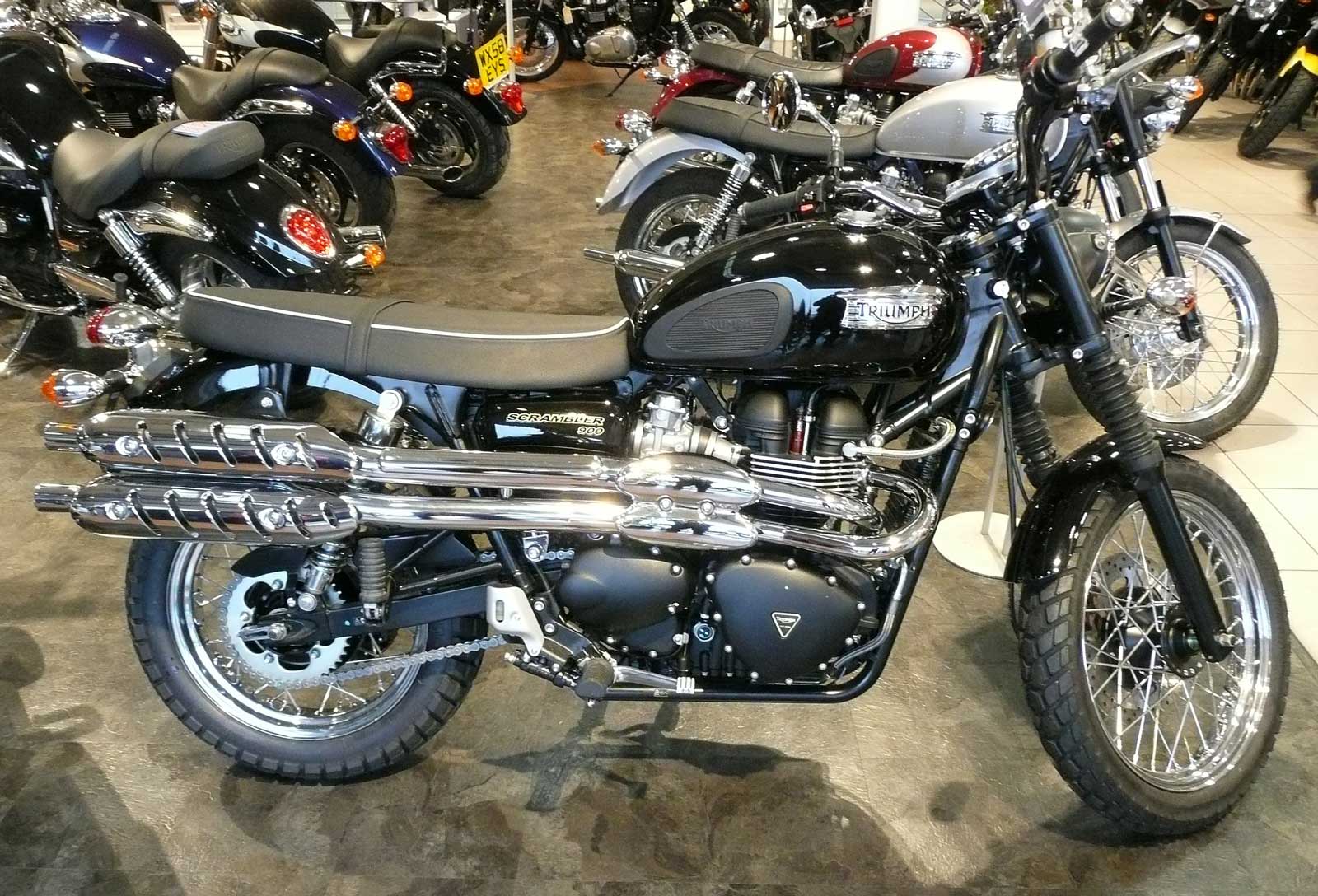
Triumph Motorcycles’ Stature in Scrambler Biking
Triumph Motorcycles has long been a bastion of the scrambler segment, skillfully merging classic allure with modern technology. With models like the Triumph Street Scrambler and Scrambler 1200, they’ve consistently set the bar high in this unique motorcycle category. Let’s delve into the core of Triumph’s scrambler lineup.
Triumph Motorcycles: A Blend of Heritage and Innovation
- Triumph’s scrambler models are a nod to the past, yet fully equipped for today’s roads, combining timeless design with current-day tech.
- The Triumph Scrambler 1200 exemplifies off-road readiness without sacrificing on-road comfort, a hallmark of the brand’s versatile design approach.
- Features like torque-rich engines and intuitive rider aids make Triumph scramblers a top choice for enthusiasts seeking both style and substance.
Triumph’s commitment to the scrambler style has made it a revered name in the motorcycle world. Each model is a testament to their dedication to riding excellence. Next, let’s turn our attention to Ducati, where Italian flair meets off-road prowess.
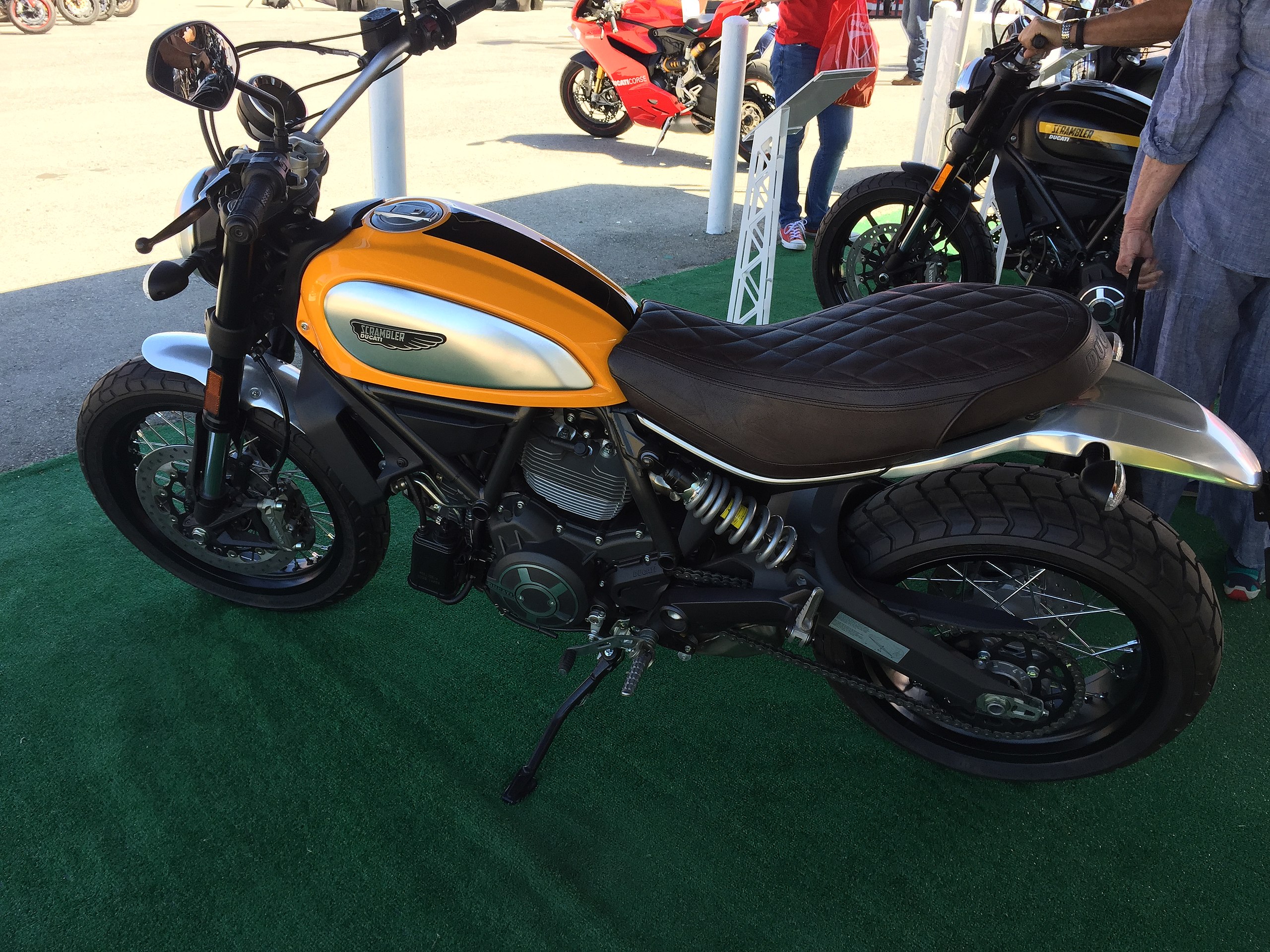
Ducati’s Dominance in the Scrambler Realm
Ducati has redefined the scrambler motorcycle with a perfect blend of Italian style and adventurous spirit. The Ducati Scrambler Icon and Desert Sled are prime examples of how the brand infuses each model with unmistakable character and performance. Here’s what sets Ducati scramblers apart.
Ducati Scrambler: Where Style Meets Versatility
- Ducati’s scramblers are renowned for their sleek design and agile handling, making them equally at home in urban jungles and on backcountry trails.
- The Desert Sled variant brings enhanced off-road capabilities, showcasing Ducati’s commitment to versatility and performance.
- With their L-twin engines and distinct styling, Ducati scramblers cater to riders who desire a motorcycle that is both a design icon and a performance powerhouse.
Ducati’s approach to scrambler motorcycles blends their racing heritage with the practicality of dual-purpose riding, creating bikes that are as visually striking as they are fun to ride. Now, let’s explore BMW Motorrad’s take on scrambler motorcycles.
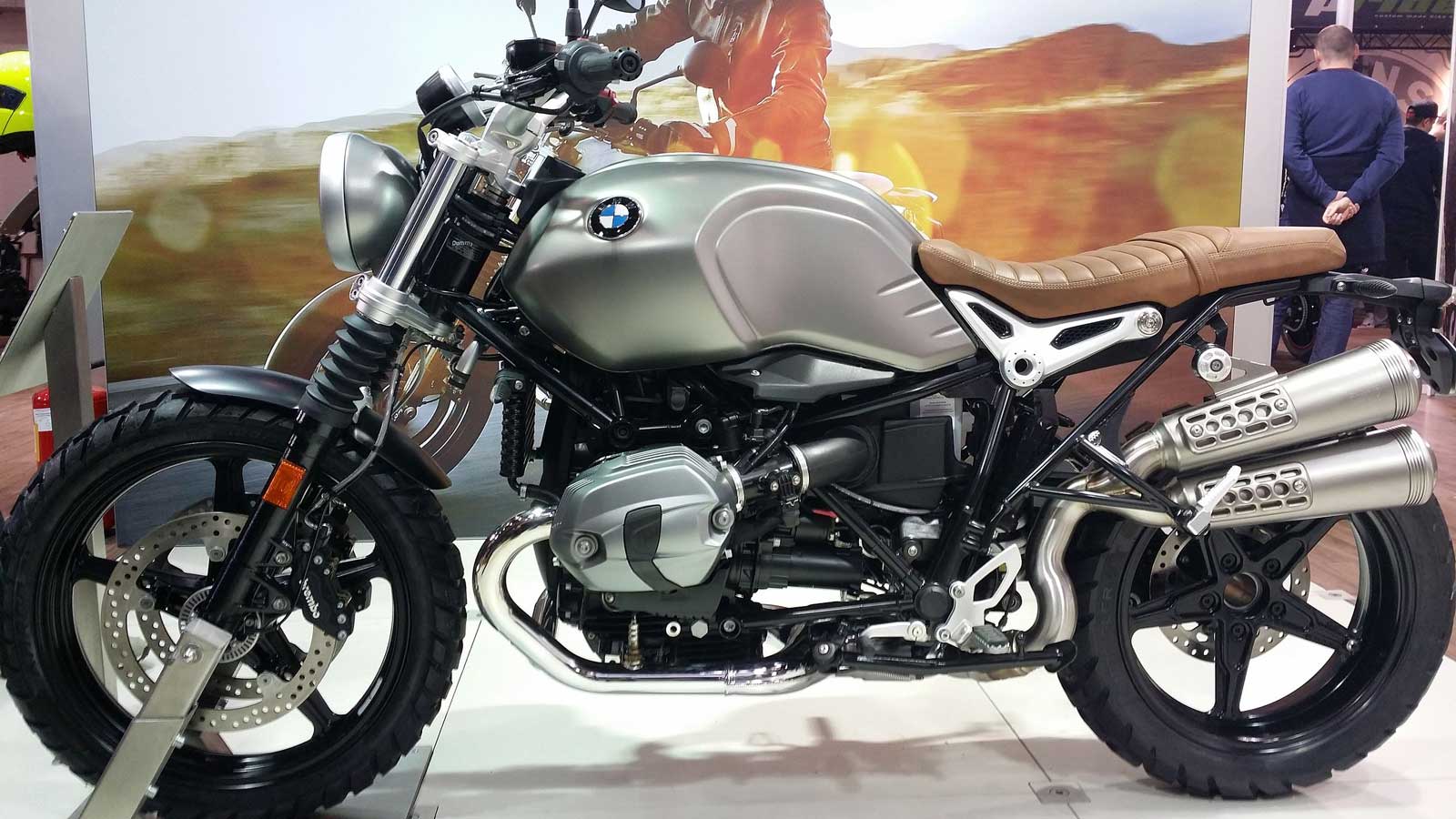
BMW Motorrad’s Engineering Excellence in Scramblers
BMW Motorrad brings its engineering expertise to the scrambler segment with models like the BMW R NineT Scrambler, a blend of heritage style and modern performance. Known for their meticulous craftsmanship and innovative features, BMW scramblers are more than just motorcycles; they’re a statement. Let’s break down the BMW R NineT Scrambler.
BMW R NineT Scrambler: A Fusion of Tradition and Technology
- The R NineT Scrambler is celebrated for its classic design, paying homage to scrambler heritage, while incorporating BMW’s advanced engineering.
- It stands out with its boxer engine, delivering a unique riding experience and unparalleled stability.
- BMW’s focus on premium build quality and rider-focused features makes the R NineT Scrambler a preferred choice for those seeking luxury and performance in a scrambler.
BMW Motorrad’s scrambler range is a testament to their ability to combine tradition with cutting-edge technology, offering riders an exceptional blend of style and engineering. These brands, each in their own right, have significantly shaped the scrambler motorcycle landscape, providing riders with machines that are not only functional but also full of character and style.
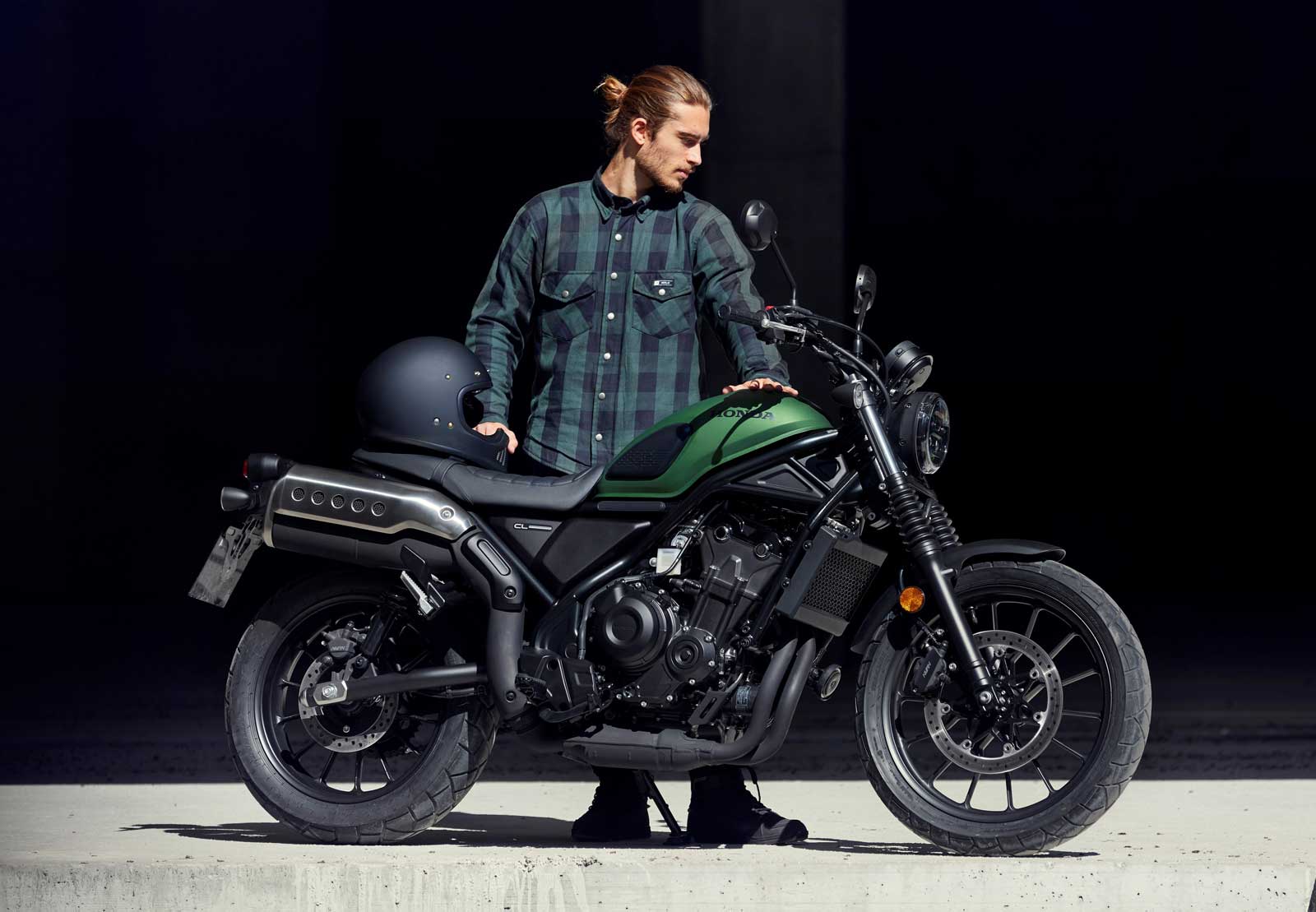
Honda’s Precision-Crafted Scramblers: Where Tradition Meets Innovation
Honda, a marque celebrated for its engineering excellence, brings a meticulously crafted approach to the scrambler segment. Far from just another lineup, Honda’s scramblers are a seamless amalgamation of time-honored design and cutting-edge performance. These bikes aren’t just about getting from point A to B; they’re about the journey in between, infused with reliability and style.
Honda Scramblers: Melding Heritage with High-Tech
- Take the Honda Rebel 500, a bike that doesn’t just nod to scrambler aesthetics but weaves them into a contemporary narrative, featuring a sleek, stripped-down look coupled with a responsive parallel-twin engine.
- Honda’s scrambler range, including potential future models, stands out for its approachable handling and robust build, making them ideal for both burgeoning enthusiasts and seasoned riders.
- It’s Honda’s reliability that truly sets their scramblers apart – these are bikes built to last, to be trusted on rugged trails and city streets alike, a testament to Honda’s philosophy of enduring quality and rider-centric design.
In the world of scramblers, Honda’s motorcycles are like a well-tuned symphony, each note crafted for harmony and impact. With Honda, riders get more than a scrambler; they get a legacy of motorcycling excellence reimagined for the modern road warrior.
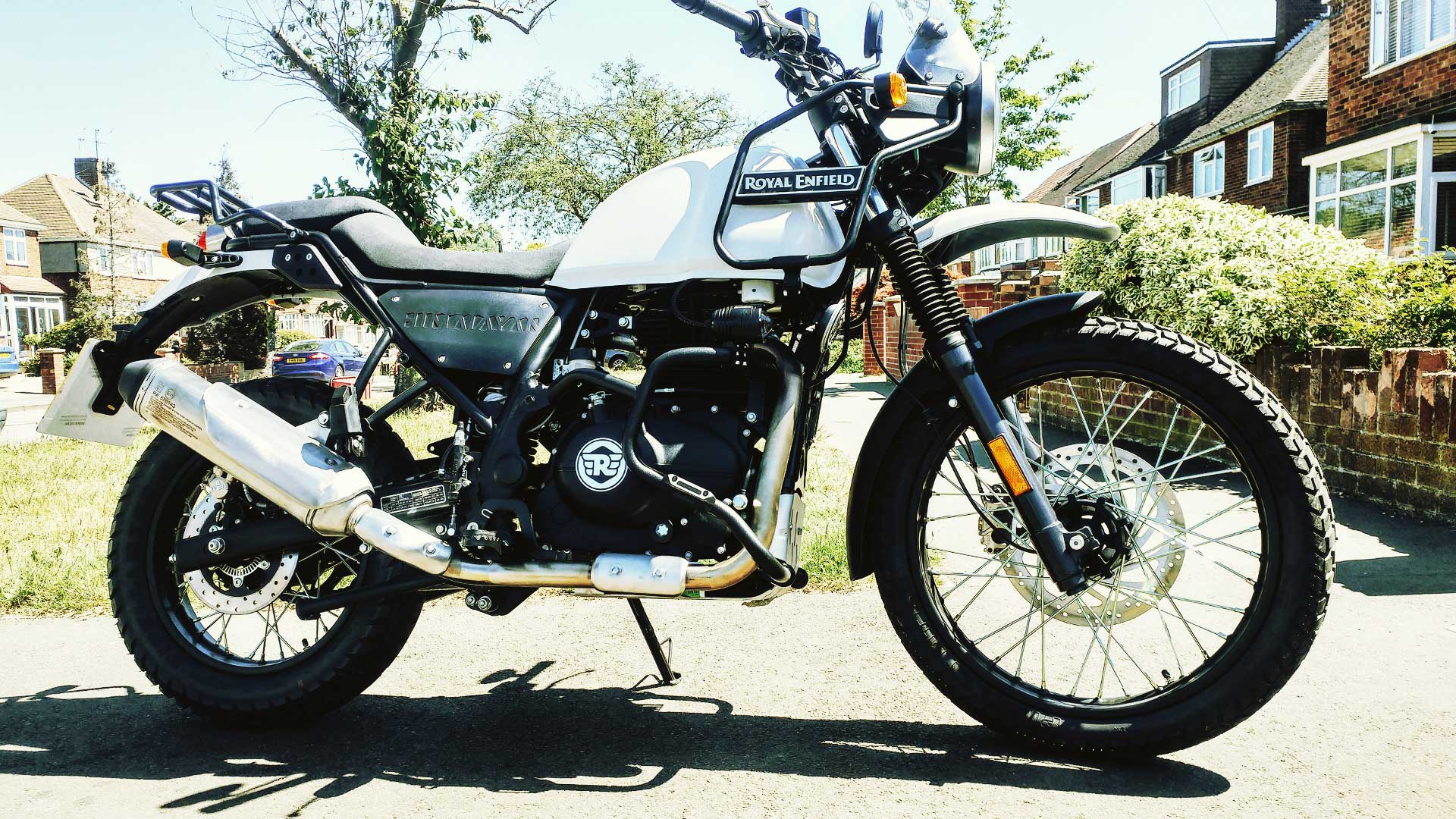
Royal Enfield’s Classic Approach to Scramblers
Royal Enfield has a storied history in motorcycle manufacturing, and their scrambler models like the Royal Enfield Himalayan reflect a commitment to timeless design and enduring performance.
Royal Enfield Scramblers: Timeless and Enduring
- Royal Enfield’s Scram 411 are known for their classic design and robust build, suitable for long adventures.
- These models combine traditional aesthetics with modern features, appealing to riders who appreciate a vintage feel with contemporary reliability.
- Royal Enfield is favored for its blend of history, simplicity, and functionality in scrambler design.
Royal Enfield scramblers are a testament to the brand’s enduring appeal in the motorcycle world, offering a blend of tradition and modernity.
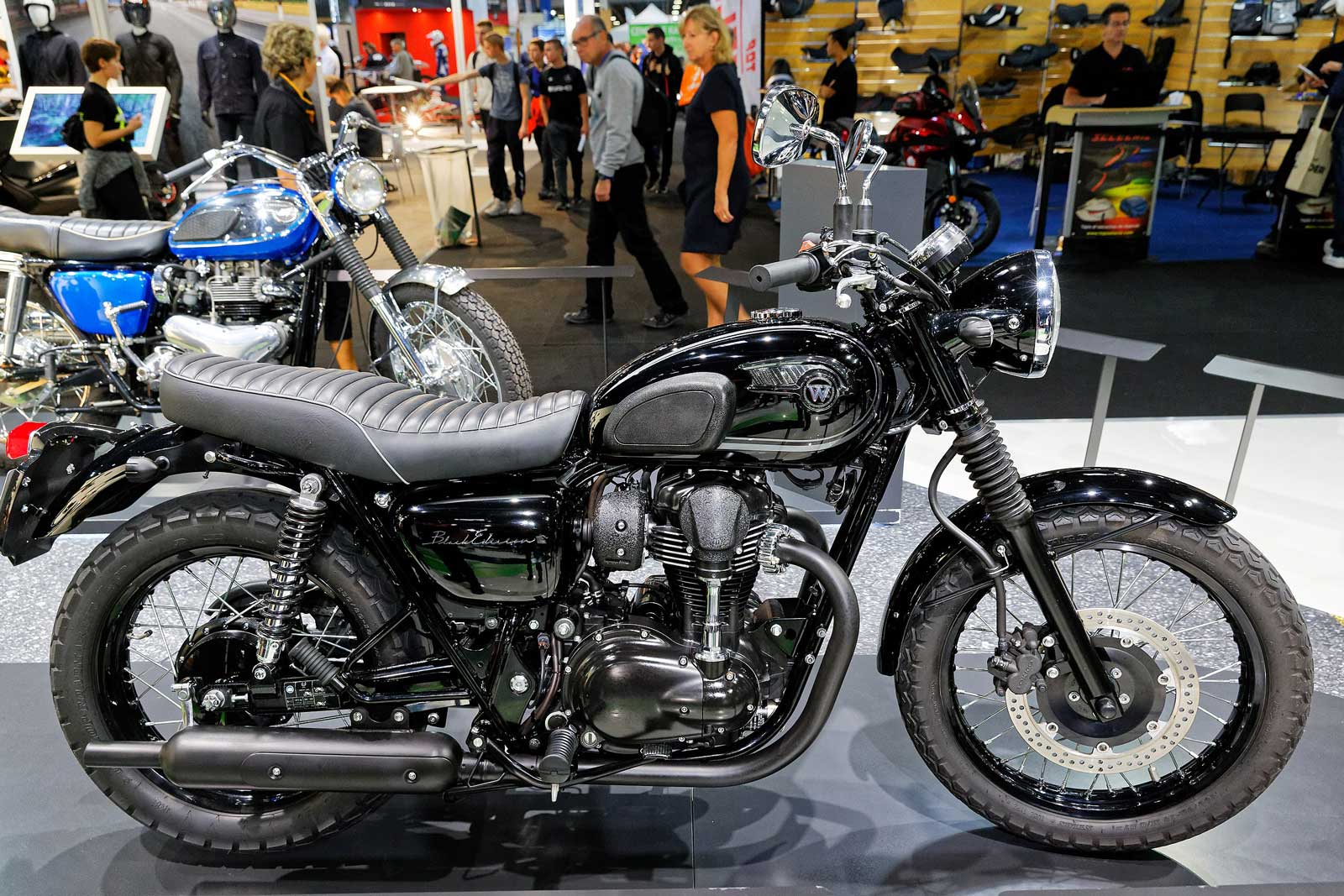
Kawasaki’s Scrambler Mastery: A Fusion of Grit and Style
Kawasaki, a titan in the motorcycle world, is not just about raw speed and sharp fairings; their scramblers are a testament to the brand’s versatility and engineering prowess. With a keen eye for blending aggressive performance with the unrefined charm of scramblers, Kawasaki introduces a thrilling twist to this motorcycle genre.
Kawasaki’s Scrambler Edge: Where Performance Meets Rugged Style
- The Kawasaki W800 stands as a beacon in their scrambler line-up, a bike that echoes the ethos of scramblers with its retro vibe, yet pulsates with modern Kawasaki DNA.
- Engineered for thrill-seekers, the W800’s heart is a potent parallel-twin engine wrapped in a frame designed for nimble handling and responsive control, whether carving city streets or navigating unpaved paths.
- It’s not just a machine; it’s a statement. Kawasaki’s scrambler is for those who don’t just ride but seek an experience – a blend of heritage soul and contemporary prowess, making every ride an exhibition of style and power.
Kawasaki’s foray into the scrambler segment breaks the mold, offering riders an experience that’s as much about making a statement as it is about versatility and performance. This is scrambler artistry, Kawasaki style.
Scrambler Motorcycles in Pop Culture and Media
Imagine tearing down a dusty backroad, the roar of the engine filling the air—it’s more than a scene; it’s a statement. Scramblers have etched their way into the very fabric of pop culture, creating icons in their rugged image. Now, let’s take a ride through the visage of cool that scramblers have painted in media and their pivotal role in shaping motorcycle trends.
Cultural Significance and Iconic Representations
Scrambler motorcycles have long been a mainstay in pop culture, creating a legacy beyond mere transportation. Triumph even created a limited edition Steve McQueen reissue of the TR6 from “The Great Escape”.
They give off a particular aesthetic that has been tapped repeatedly for its grit and authenticity in various media—from Matthew McConaughey cruising on a Triumph Bonneville scrambler in “How To Lose A Guy in 10 Days” to another Triumph, this time the Scrambler 1200XE, in the James Bond flick, “No Time To Die”.
Influence on Motorcycle Culture and Trends
Let’s shift gears to how scrambler motorcycles have shaped the motorcycle culture as we know it. Here’s the lowdown: scramblers have become the blueprint for innovation and style within the industry. Their characteristics—raised exhausts, knobby tires, and minimalist design—have inspired legions of custom builders and manufacturers.
- Their cross-terrain adaptability has set new standards in functionality, appealing to riders looking for multipurpose machines.
- The retro-modern aesthetic fuels current motorcycle design trends, bringing a mix of nostalgia and sleekness to the fore.
- Scrambler meetups and rallies foster community and camaraderie, reinforcing their social significance.
These cultural and industrial impacts show that scramblers are more than bikes—they’re a lifestyle choice, a personal statement, and a cultural icon married to the spirit of independence.
Comparative Analysis of Scrambler Models
Imagine hitting the open road with a bike that laughs in the face of rough terrain. That’s what owning a scrambler motorcycle offers. Let’s shift gears and zoom in on how these rugged rides stack up against one another.
Overview of Different Scrambler Models and Brands
A variety of scrambler motorcycles stake their claim in the biking world, each with their own die-hard fans. Ducati and Triumph are titans in this arena, with models like the Ducati Scrambler Icon and Triumph Street Scrambler revving up the competition. Think knobby tires, retro designs meeting modern tech – these brands promise that and more.
As for the Ducati Scrambler Icon, it represents the essence of Ducati in a classic but updated form. The robust Triumph Street Scrambler, on the other hand, offers a blend of off-road capabilities and street-wise sophistication.
Comparative Features and Specifications
To illustrate the typical specifications of a scrambler motorcycle, we’ve selected two representative examples to give you a clear idea of the features and design elements commonly found in this style of bike.
When you’re comparing the mechanical stallions like the Triumph Scrambler 1200 against the riveting Italian Ducati Scrambler Icon, the devil is truly in the details.
| Feature | Ducati Scrambler Icon | Triumph Scrambler 1200 |
|---|---|---|
| Engine | 803cc L-twin | 1200cc parallel-twin |
| Power | approx. 73 horsepower | approx. 89 horsepower |
| Torque | 49 lb-ft | 81.1 lb-ft |
| Seat Height | 31.4 inches | 31.1 inches (adjustable) |
| Weight | 417 pounds (wet) | 452 pounds (dry) |
| Tires | Pirelli MT60RS | Metzeler Tourance |
| Special Features | LED lighting, cornering ABS | Ride modes, cornering ABS, customizable Traction Control |
You’ll notice the Triumph Scrambler 1200 isn’t just flexing its muscles with a beefier engine; it also boasts advanced tech features. But don’t discount the Ducati Scrambler Icon just yet. Its lighter weight and agile L-twin engine might be the perfect fit for your urban escapades – plus, it’s slightly friendlier on your wallet.
Remember, the ride is about more than numbers—it’s how the bike feels on the open road. Next up, we’ll dive into the unique aesthetics that define scrambler motorcycles.
Versatility and Use Cases of Scrambler Motorcycles
Think you know motorcycles? Scramblers are about to reshape that notion. These beasts offer a rare blend of functionality, letting you conquer both the urban jungle and untamed paths. Get ready to discover how a scrambler could be your ticket to freedom on two wheels.
On-Road and Off-Road Capabilities
Ever faced the dilemma of choosing between a city ride and an off-road adventure? Scrambler motorcycles squash that conundrum. Featuring spoked wheels and long-travel suspension, these bikes demonstrate remarkable agility on asphalt. Yet, they’re rugged enough for off-road escapades, thanks to their durable build and traction-friendly wheels. Let’s break it down:
- On-Road: When you’re zipping through city streets, you’ll appreciate the scrambler’s responsive handling and comfortable ride.
- Off-Road: Venturing into the wild? The bike’s suspension absorbs the bumps, while its design keeps you in control, regardless of the terrain.
Suitability for Different Types of Riders and Purposes
Are you a daily commuter or a weekend warrior? Scrambler motorcycles cater to a wide audience, making them suitable for virtually any rider. The simplicity in their design and robust features make scramblers ideal for:
- New Riders: The manageable size and forgiving nature promote confidence.
- Experienced Riders: Looking for versatility? The scrambler adjusts to your lifestyle, whether it’s commuting or seeking thrills off the beaten path.
As we shift gears, learn how you can maximize your ride with the right gear for a scrambler motorcycle.
Advantages and Limitations of Scrambler Motorcycles
Curious about the road less traveled? Scrambler motorcycles may just be the rugged companions you’re seeking. Here’s what you need to know about their capabilities and considerations.
Practical Benefits and Unique Selling Points
You want a bike that’s as tough as nails, right? Scrambler motorcycles boast a raised suspension system, giving you the clearance needed to tackle unpredictable terrains. Their robust, air-cooled engines adeptly handle the rigors of both asphalt adventures and off-road escapades, keeping your ride consistently cool under pressure.
- Flexible clutch mechanisms provide seamless power transitions and heightened control, a definite pro when you’re zooming on varied surfaces.
- High-mounted exhausts aren’t just there for looks; they position beneficially to avoid damage and debris, which is paramount when off-roading.
- In terms of braking, scramblers offer a balance between the delicate finesse required for city streets and the assertive grip needed for dirt paths.
Considerations for Maintenance, Cost, and Usability
Now, let’s talk brass tacks. Scramblers are no exception to the rule that special features come with specific maintenance needs. Regular checks on the suspension and clutch systems are non-negotiable to keep those unique selling points in top shape. And while the air-cooling system is less complex than its liquid-cooled relatives, staying vigilant on its upkeep is key for optimum performance.
- Understand that the very nature of a scrambler may involve higher maintenance efforts, particularly after rigorous off-road use.
- When it comes to cost, the initial price tag might be friendly, but factor in potential upkeep expenses that might accumulate from its adventurous lifestyle.
- Usability-wise, think about your own riding habits. The scrambler’s versatility is alluring, but ensure it aligns with your practical needs and skill level.
It’s a trade-off: get ready to embrace the scrambler’s unique prowess, while staying mindful of the tangible aftercare. Ready to shift gears and explore what lies beyond the tarmac?
Scrambler Motorcycles for Enthusiasts and Potential Buyers
You’re in the market for something that stands out, that melds classic design with modern performance. Enter the scrappy world of scrambler motorcycles. Before we jump in, let’s focus on what makes these bikes tick and how to choose the right one.
What to Look for When Exploring Scrambler Options
Engine Performance: Your scrambler’s heart is its engine. Models like the Ducati Scrambler boast engines that provide a smooth yet robust ride, while options like the Rebel 500 come with a reliable powertrain suited for various riding scenarios.
- Fenders and Exhaust Pipes: Key components such as fenders protect against road debris, and high-mounted exhaust pipes not only give scramblers their signature look but also enhance practicality for off-road adventures.
Frame and Gauges: When considering a purchase, pay attention to the bike’s frame—its stability and agility are vital. Modern gauges should offer clarity and ease of use, including digital displays that keep you informed and focused on the ride ahead.
Tips for New and Experienced Riders
Start with the Basics: As a new rider, you should prioritize ease of handling and comfort. A bike with a manageable weight and an upright riding position, like the Rebel 500, can offer you confidence as you learn.
For those with more experience:
- Experiment with different seat configurations and suspension setups to tailor your scrambler to your unique riding style.
Maintenance Matters: Regular upkeep keeps your scrambler in top condition. For instance, ensure your bike’s fenders remain damage-free to prevent unnecessary wear and tear.
Remember, each scrambler has its unique quirks, so getting to know your bike inside-out will enhance your riding experience and safety on the road.
Bold the main design traits when you’re scouring the details of prospective bikes, and always test ride to see how theories translate to road realities. As you gear up for the next section, consider these tips the roadmap to finding your dream scrambler motorcycle.
The Future of Scrambler Motorcycles
Imagine hitting the open road with the latest in motorcycle technology beneath you. You’re not just along for the ride; you’re a trailblazer in the evolving world of scrambler motorcycles. Let’s dive into the advancements that are shaping your future ride.
Trends and Potential Developments
Electric Scramblers: are steering the market towards a new horizon. The rumbling engines and exhaust fumes are giving way to silent, instantaneous torque of electric engines. This isn’t just about keeping up with trends; it’s a shift towards harmonizing off-road thrills with urban practicality. Expect manufacturers to release models that honor the scrambler’s heritage while embracing the electric revolution.
- Integrated Technology: From GPS-enabled dashboards to ride-assisting software, technology is becoming as much a part of motorcycles as the wheels beneath them. You can anticipate a future where your scrambler is as smart as it is stylish.
Environmental Considerations and Technological Advancements
Scrambler motorcycles and environmental sustainability seem ready to go hand in hand. Advances in battery technology and sustainable materials are laying the foundation for scramblers that are as kind to the environment as they are exhilarating to ride.
Technological advancements aren’t just a question of power but also of responsibility. With great torque comes great sustainability. Innovations like regenerative braking, solar charging panels, and even biofuels might find their home in the scrambler’s evolving design. Keep an eye out for leaps in functionality that make your ride both more powerful and more planet-friendly.
Now, imagine all that potential innovation at your fingertips. The next section will take us through the past, present, and inspiring future of scrambler motorcycle design.
Frequently Asked Questions
Curious about scrambler motorcycles? You’re not alone. Let’s tackle some of the burning questions on scrambler bikes to fuel your knowledge.
Can scrambler motorcycles be used for off-road riding?
Absolutely. Scrambler motorcycles are designed with off-road capabilities in mind. They typically feature high-mounted exhaust pipes and a suspension tuned for rough terrain, making them suitable for off-road adventures. Just remember, the level of off-road proficiency can vary among different models.
What are the typical engine specifications, like cc, for scrambler motorcycles?
Scrambler motorcycles come with a wide range of engines. You’ll find models anywhere from 250cc to 1200cc. Generally, the mid-range 800cc to 900cc engines balance power and agility, offering a solid all-purpose ride.
What are the legal considerations for riding a scrambler motorcycle on public roads?
Riding a scrambler on the street requires adherence to the same legal standards as other motorcycles. This means proper registration, insurance, and adherence to noise regulations due to their typically higher exhaust pipes. Always check your local laws for specifics, as requirements can vary by location.

